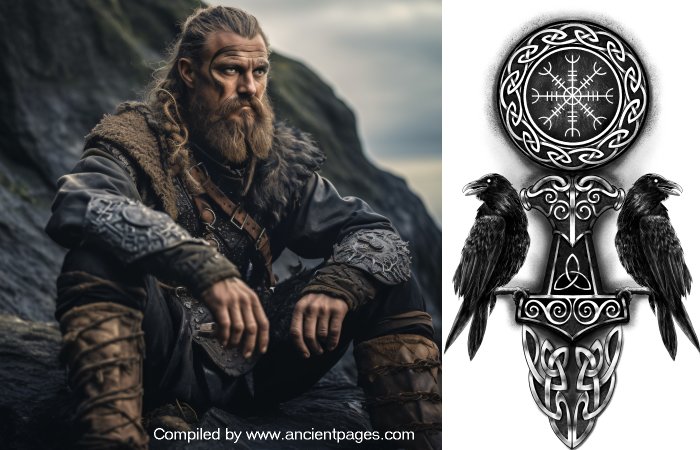How Common Were Tattoos Among Vikings And Norse People?
Ellen Lloyd AncientPages.com - Archaeologists have found evidence that people in almost all corners of the world have practiced tattooing for thousands of years. Tattoos are a part of various cultures worldwide, serving diverse purposes and holding numerous significances.
In ancient times, Siberian nomads, Indigenous Polynesians, Nubians, Native South Americans, Greeks, and ancient Egyptians, just to mention a few, embraced tattoos for various reasons. These included protection from evil, declarations of love, signifying status or religious beliefs, adornments, and even forms of punishment. The practice of tattooing has been deeply rooted in cultural traditions across different societies, reflecting the rich tapestry of human expression and symbolism.
Anyone who visits Scandinavia today will find that both men and women are very fond of tattoos and gladly cover their bodies with various symbols of all sizes, shapes, and colors. But what attitude did Norsemen have towards tattoos? Did ancient Vikings wear tattoos, and if so, why?
Is There Any Evidence Of Norse Tattoos?
We do know that the Celts and Northern European tribes, such as the Picts, which literally means “painted people,” all practiced some form of tattooing, but the subject becomes more complex when Vikings are concerned.
As mentioned by Ancient Pages, men and women were vain and very clean during the Viking Age. Scientists have discovered tweezers, combs, razors, nail cleaners, ear cleaners, and toothpicks inside Viking tombs. All these Viking artifacts show that people of the Viking Age cared greatly about personal grooming.
Credit: IMDb - Fair use
However, whether Vikings also wore tattoos remains uncertain. So far, archaeologists have not discovered any ancient remains of Vikings who had covered their bodies with tattoos. This doesn’t exclude the possibility that Vikings didn’t bother with tattoos, but there is no conclusive evidence this was the case.
The problem with investigating the history of ancient tattoos is that skin is fragile and rarely survives burials. Like most Viking clothes rotted away and disappeared when archaeologists excavated their tombs, the same applies to finding traces of ancient tattoos.
Also, we shouldn’t forget that Viking funeral traditions and rituals were very complex. Not all Vikings were buried. A great Viking warrior received a ship burial, which involved placing the deceased on the ship, sailing him out to sea, and setting the ship on fire.
An ancient account indicating that Vikings enjoyed tattoos comes from al-Tartushi, an Arabic emissary who visited Hedeby in the tenth century.
Reconstructed house at Hedeby. Image credit: Matthias Süßen - CC BY-SA 4.0
Hedeby was a prestigious trading center and one of the largest Baltic Sea ports in Viking Age.
al-Tartushi documented his travel experiences and encounters with the Vikings. Unfortunately, his work did not survive, but its excerpts have been preserved in Arab geographical collections. From one account, we learn that al-Tartushi noticed that Vikings wore artificial eye makeup that never vanished. This made them look younger and more beautiful, he said. He also wrote that Vikings had tattoos on their arms and chests. These tattoos were strange patterns and symbols resembling animals and trees.
It’s an intriguing observation. Ancient Egyptian men wore eye makeup for a number of reasons, but the use of such cosmetics by males in Viking society has never been confirmed. Archaeologists have never discovered any eyeliner or mascara in Hedeby.
No other ancient sources have confirmed al-Tartushi’s claims.
Ahmad ibn Fadlan, a 10th-century traveler from Baghdad, met Swedish merchants whom he called the Rus at the bank of the Volga, where they exchanged goods with Muslim traders.
In his account, ibn Fadlan described the physical appearance of the Vikings saying: "I have seen the Rus as they came on their merchant journeys and encamped by the Atil [the Volga]. I have never seen more perfect physical specimens - tall as date palms, blond and ruddy. Each man wore a garment which covered his body on one side and left one side free for action. Each man carried an axe, a Frankish-Type sword and a knife with him. Tattoos covered him from finger-tip to neck. They drink wine excessively day and night."
We can conclude by saying it remains unknown how common or uncommon tattoos were in Norse society.
If Norse people used tattoos, then perhaps they picked one of the most popular Norse and Viking symbols we described in our previous article - 10 Viking And Norse Symbols.
Written by Ellen Lloyd – AncientPages.com
Copyright © AncientPages.com All rights reserved. This material may not be published, broadcast, rewritten or redistributed in whole or part without the express written permission of AncientPages.com
Expand for referencesKane, Njord. The Vikings: The Story of a People
Tibi Amin, The Vikings In Arabic Sources - Islamic Studies 35, no. 2 (1996): 211–17.
Hraundal, Thorir Jonsson. “New Perspectives on Eastern Vikings/Rus in Arabic Sources.” Viking and Medieval Scandinavia 10 (2014): 65–98.
More From Ancient Pages
-
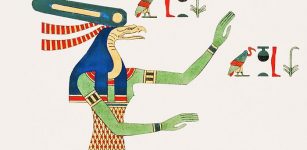 Wadjet – Egyptian Goddess Protected Pharaohs And Was Depicted As A Cobra-Uraeus
Egyptian Mythology | May 29, 2021
Wadjet – Egyptian Goddess Protected Pharaohs And Was Depicted As A Cobra-Uraeus
Egyptian Mythology | May 29, 2021 -
 On This Day In History: Teotihuacan’s Warlord Siyaj K’ak’ Conquers Tikal – On Jan 16, 378
News | Jan 16, 2017
On This Day In History: Teotihuacan’s Warlord Siyaj K’ak’ Conquers Tikal – On Jan 16, 378
News | Jan 16, 2017 -
 Ancient DNA Has Traced Large-Scale Migrations Into Bronze Age Britain And The Emergence of The Celtic Language
Archaeology | Dec 30, 2021
Ancient DNA Has Traced Large-Scale Migrations Into Bronze Age Britain And The Emergence of The Celtic Language
Archaeology | Dec 30, 2021 -
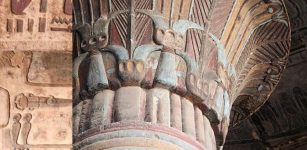 Original Colors Of 2,000-Year-Old Inscriptions At Temple Of Esna, Luxor – Revealed
Archaeology | Nov 14, 2020
Original Colors Of 2,000-Year-Old Inscriptions At Temple Of Esna, Luxor – Revealed
Archaeology | Nov 14, 2020 -
 Exciting discoveries made by archaeologists in Laconia
News | Aug 25, 2015
Exciting discoveries made by archaeologists in Laconia
News | Aug 25, 2015 -
 Unusual 2,500-Year-Old Face Urns Reveal Garments, Appearance And Jewelry Of Prehistoric People
Archaeology | Nov 11, 2017
Unusual 2,500-Year-Old Face Urns Reveal Garments, Appearance And Jewelry Of Prehistoric People
Archaeology | Nov 11, 2017 -
 Huangluo: Long-Hair Village Where Women Don’t Cut Their Hair – A 2,000-Year-Old Tradition Of The Yao People
Ancient Traditions And Customs | Jun 18, 2017
Huangluo: Long-Hair Village Where Women Don’t Cut Their Hair – A 2,000-Year-Old Tradition Of The Yao People
Ancient Traditions And Customs | Jun 18, 2017 -
 Menes – Legendary First Monarch Probably Under Different Names Who Unified Egypt
Featured Stories | Nov 7, 2016
Menes – Legendary First Monarch Probably Under Different Names Who Unified Egypt
Featured Stories | Nov 7, 2016 -
 Achaemenid Empire Was The World’s Largest Ancient Empire
Ancient History Facts | Mar 26, 2016
Achaemenid Empire Was The World’s Largest Ancient Empire
Ancient History Facts | Mar 26, 2016 -
 Beware Of The Night Marchers – Deadly Ghosts Of Warriors Who Kill With Just One Look
Featured Stories | Jul 23, 2019
Beware Of The Night Marchers – Deadly Ghosts Of Warriors Who Kill With Just One Look
Featured Stories | Jul 23, 2019 -
 On This Day In History: Dryburgh Abbey One Of Most Beautiful Of All Border Abbeys Of Scotland Founded – On Nov 10, 1150
News | Nov 10, 2016
On This Day In History: Dryburgh Abbey One Of Most Beautiful Of All Border Abbeys Of Scotland Founded – On Nov 10, 1150
News | Nov 10, 2016 -
 Mystery Of The Kusanagi Treasure: The Legendary Sword
Artifacts | Feb 8, 2016
Mystery Of The Kusanagi Treasure: The Legendary Sword
Artifacts | Feb 8, 2016 -
 Dancing Around The Throne: Networking In TheTime Of King William I
Ancient Traditions And Customs | Jul 4, 2023
Dancing Around The Throne: Networking In TheTime Of King William I
Ancient Traditions And Customs | Jul 4, 2023 -
 Major Breakthrough: 1.4-Million-Year-Old Bones Discovered In Spain Rewrite History Of Human Evolution In Europe
Archaeology | Sep 29, 2022
Major Breakthrough: 1.4-Million-Year-Old Bones Discovered In Spain Rewrite History Of Human Evolution In Europe
Archaeology | Sep 29, 2022 -
 New Astronomical Knowledge Sheds Light On The Start Of Viking-Age Trade
Archaeology | Dec 22, 2021
New Astronomical Knowledge Sheds Light On The Start Of Viking-Age Trade
Archaeology | Dec 22, 2021 -
 How Did Hindu God Shiva Get His Third Eye?
Featured Stories | May 13, 2019
How Did Hindu God Shiva Get His Third Eye?
Featured Stories | May 13, 2019 -
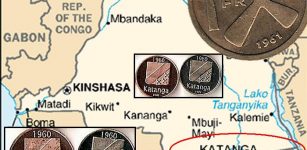 Katanga Cross: Symbol Of Secrets, Power And Valuable Currency Of The Congolese People
Ancient Symbols | Sep 10, 2018
Katanga Cross: Symbol Of Secrets, Power And Valuable Currency Of The Congolese People
Ancient Symbols | Sep 10, 2018 -
 Tír na nÓg – Mythical Land Where Time Floats Slower Than In Mortal Lands
Celtic Mythology | Mar 2, 2020
Tír na nÓg – Mythical Land Where Time Floats Slower Than In Mortal Lands
Celtic Mythology | Mar 2, 2020 -
 House Of Dragons – Stories And British History That Inspired The Beasts Of Westeros
Featured Stories | Sep 18, 2022
House Of Dragons – Stories And British History That Inspired The Beasts Of Westeros
Featured Stories | Sep 18, 2022 -
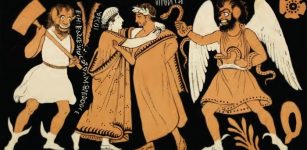 Tuchulcha: Wicked, Hideously Grotesque Etruscan Demon Identified With Both Male And Female Genders
Featured Stories | Jun 11, 2023
Tuchulcha: Wicked, Hideously Grotesque Etruscan Demon Identified With Both Male And Female Genders
Featured Stories | Jun 11, 2023

